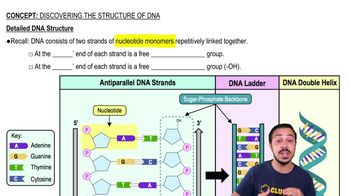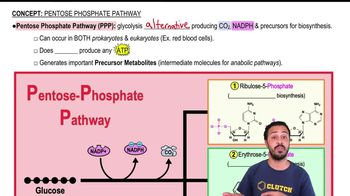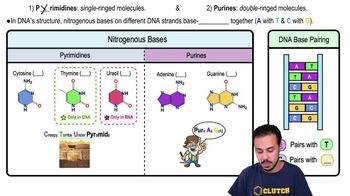Textbook Question
The __________ scale is a measure of the concentration of hydrogen ions in a solution.
60
views
 Verified step by step guidance
Verified step by step guidance



The __________ scale is a measure of the concentration of hydrogen ions in a solution.
Proteins are polymers of __________.
a. amino acids
b. fatty acids
c. nucleic acids
d. monosaccharides
Which of the following is most likely the number of base pairs in a bacterial chromosome?
a. 4,000,000
b. 4000
c. 400
d. 40
In DNA, adenine forms ___________ hydrogen bonds with ____________ .
a. three / uracil
b. two / uracil
c. two / thymine
d. three / thymine
Compare and contrast the structure and components of DNA and RNA in prokaryotes.
Haploid nuclei ___________.
a. contain one set of chromosomes
b. contain two sets of chromosomes
c. contain half a set of chromosomes
d. are found in the cytosol of eukaryotic organisms